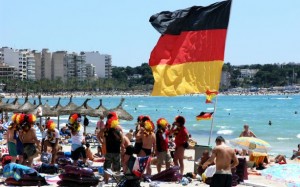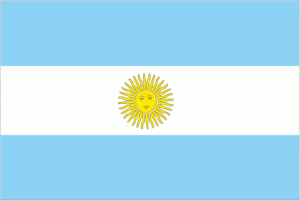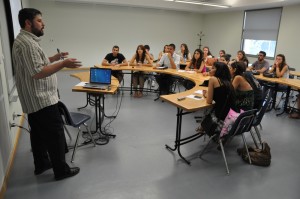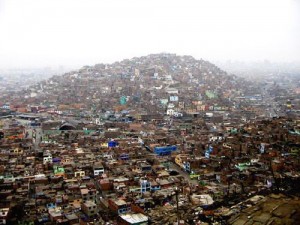 Population of Greece
Population of Greece
The most recent official estimate for the population of the Hellenic Republic, colloquially known as Greece, is the 2011 Census conducted by the Greek government. The census indicated that the population was 10,815,197 people in 2011. According to statistics provided by the European Union, in 2012, as a result of decreasing birth rates and migration rates, the population decreased by 60,500 people. So, based on these estimates and the census conducted in 2011, the population in 2012 was 10,754,697. Between the years 2011 and 2012, the population experienced a decrease of 0.56%. Under the assumption that the population continued such a pattern, the population in 2013 can be estimated at 10,694,535. Again, if this same population decline continues in 2014, the population of Greece in 2014 can be estimated at 10,634,710. Based on this estimate for the population in 2014 and the total land area of the country, the population density can be estimated at 81.3 people per square kilometer or 210.56 people per square mile. Assuming that the populations of other countries are held constant, Greece would still remain 79th in the world population rankings, behind Guinea, but ahead of Rwanda. So, depending on the type of population growth that Rwanda experienced over the past couple of years, Rwanda may have jumped Greece in the rankings.
Geography of Greece
Greece occupies 131,957 square kilometers or 50,949 square miles at the southern end of the Balkans, west of the Aegean Sea. Its mainland is a peninsula, which is connected to the Peloponnese peninsula by the Isthmus of Corinth. The mainland is mainly mountainous and, in fact, 80% of the country consists of mountains or hills. Mount Olympus is the tallest mountain in the country and its highest point, Mytikas peak, reaches 2,917 meters or 9,570 feet. One of the major mountain ranges in Greece is the Pindus range, whose highest point is at Mount Smolikas, reaching 2,637 meters or 8,652 feet. Another important geographic feature of the Pindus range is the Vikos Gorge in the Vikos-Aoos National Park. According to the Guinness Book of World Records, the Vikos Gorge is the deepest gorge in the world, reaching 400 to 1,600 feet or 120 to 490 meters deep. In areas such as Thessaly, Central Macedonia, and Thrace, the main geographic features are the extensive plains throughout these regions. Because they are some of the only arable lands in Greece, they make up an essential part of Greece’s economy. Lastly, depending on the definition of an island, Greece contains between 1,200 to 6,000 different islands. 227 of these islands are occupied. Crete is not only the largest in geographic area, but also in terms of population.
Government of Greece
The current Constitution went into effect in 1975. However, revisions were made to the Constitution in 1986, 2001, and 2008. Greece is considered to be a parliamentary republic, made up of three separate branches: executive, legislative, and judicial. The executive branch consists of the president, prime minister, and the cabinet. The president serves as the head of state, but after the revisions to the Constitution in 1986, his or her duties are mainly ceremonial. The Parliament chooses the president for a five-year term with no limits on the number of terms. The president has the power to appoint or dismiss any member of the cabinet. The current head of state is Karolos Papoulias, a member of the Panhellenic Socialist Movement. The prime minister is the head of government and thus contains most of the political power. The prime minister is the leader of the political party that can obtain a vote of confidence from the Parliament and is thus appointed by the president. The current head of government is Antonis Samaras, a member of the New Democracy Party. The legislative body of Greece is a unicameral Parliament, made up of 300 elected members. The president of the Parliament is also the prime minister. Lastly, the judicial branch is split up into civil and administrative courts and has three Supreme Courts: Court of Cassation, Council of State, and the Chamber of Accounts. Each Supreme Court has a president, along with a various number of other members. In order to serve as a judge, one must graduate from the National School of Judges. In special circumstances, the Supreme Special Court may preside over a case. Each president from the other three Supreme Courts and two other members from both the Court of Cassation and the Council of State serve on the Supreme Special Court.
Education in Greece
Education in Greece is compulsory from ages 4 to 15, beginning with kindergarten and ending with gymnasia. After kindergarten, students enter primary school, which lasts for six years. Then students attend gymnasia for three years. After these mandatory portions of education, students have the option to attend an upper secondary school or a technical-vocational educational school, which allows for students to pursue something other than an academic career. After the post-compulsory secondary education, students can attend higher educational institutions in the university sector or the technological sector, depending on a student’s desires. The state also offers non-university tertiary institutes for those students that simply wish to focus on a specific vocation or trade. Lastly, 97.3% of the adult population is literate, while 99.4% of male youths and 99.3% of female youths are literate.
Health and Health Care in Greece
Before the economic crisis that hit Europe and the world, Greece was considered to have one of the finest and best health care systems in all of Europe. With universal health care, Greek citizens would pay a certain amount into the system and would pay little or nothing at all to receive health care. Along with this, those unable to afford health insurance and the unemployed were never turned away. They had an option even if they could not pay for it. However, because of the economic crisis and the unemployment rate soaring over 25%, the reality of health care in Greece is that they can no longer afford to offer care at little or no cost like the used to. Not only this, but there is a hiring freeze in both doctors and nurses because the facilities simply cannot afford new personnel. The facilities also cannot afford to repair or replace broken technology, which creates a decrease in the quality of the health care that the Greeks are obtaining. Specifically, the number of HIV and tuberculosis cases is exponentially increasing due to the lack of treatment of those already infected. Another problem that has caused a strain on the system is the high cost of prescription drugs in Greece, the burden of which is placed on the doctors and pharmacies.
According to UNICEF, as of 2012, the under-five mortality rate is 5 deaths per 1,000 children. The infant mortality rate, considered to be one of the lowest in the world, is 4 deaths per 1,000 infants. The life expectancy, which has been one of the highest in the world, is 80.6 years, with females expected to live longer than males. However, the island of Ithaca is considered to have the highest percentage in the world of those over the age of 90 years. About 33% of those living on the island will reach the age of 90. 99.8% of the population uses improved drinking water sources, while 98.6% of the population uses improved sanitation facilities. Lastly, as of 2013, Save the Children ranked Greece 19th out of 176 countries in terms of the state and safety of mothers and their newborn children.
 Greece Population Projections
Greece Population Projections
By the year 2015, the population is estimated to grow to about 11.4 million people, which is an estimated growth of 0.88%. Then, by the year 2020, the population is projected to reach 11.45 million people, a growth of about 1.3% from the current population. Then, in 2025, the population will reach 11.49 million people, an increase of about 1.7%. Continuing this slow increase in population in 2030, the population will top 11.5 million to 11.505 million people, an increase of 1.8%. By 2035, the population is projected to reach 11.515 million people as it increases by 1.9% from the current size of the population. Lastly, by the year 2040, the population is projected to be 11.526 million people, which is an increase of about 2% from the current population.
Greece Demographics
The largest ethnic group in the Hellenic Republic, or Greece, is the native Greek population. Over 97% of the population considers themselves to be native Greek. The rest of the population is made up of other groups, such as Turks, Aromanian, Macedonians, and others from Southern Asia. There are many other ethnicities throughout the country, but these are the major groups. The main spoken language of the country is Greek. Two other major languages in the country are English and Bulgarian.
Religion in Greece
Over 97% of the population of Greece practices the Greek Orthodox religion. Besides Russia, Greece is the only other country to officially adopt an Orthodox religion. The Orthodox religion is the largest sect of Christianity, besides Roman Catholicism and Protestantism. Besides the Greek Orthodox religion, some people practice Islam, Roman Catholicism, and Judaism.
Economy of Greece
Over the last few years, the economy of Greece has been enduring a bit of turmoil and struggles. The unemployment rate in Greece is currently at an approximate 24% of the labor force. Out of the 43 countries of Europe, the economy of Greece is ranked 40th. However, the GDP growth is sitting at 6.9% annually. However, the GDP per capita is only $26,294 since the total GDP is $294.3 billion. In fact, due to the country’s debt, it needed a bailout in 2011. However, this bailout was unsuccessful and therefore a second bail out was granted in 2012. This was intended to decrease the debt of the country by about 53%.
Education in Greece
As of 1997, 56% of adults had gone without completing their upper secondary education level in school; and only 16% had completed the tertiary education level in the country. However, significant progress has been made over the last 16 years. Now, only about 39% of adults go without completing their upper secondary education level, and 24% have completed the tertiary education. While this is not perfect, it is progress that will surely continue as time goes on. The numbers prove how important completing a tertiary degree is: about 82% of those with tertiary degrees have jobs, compared to the 59% of those who don’t.
Sports in Greece
Due to the fact that Greece is the home of the ancient Olympic games, sports are a large part of the country’s culture. In fact, Greece is one of only two countries that have participated in every single Olympic event. The modern day Olympics have been held in Athens three times: 1896, 1906, and 2004. The most loved and played sport is football (American soccer). The Greek team won the 2004 UEFA Championship even. Some other important sports in the country are basketball, water polo, weight lifting, and wrestling.
Visit Crete Greece
Other Resources
Learn More about Greece



 Population of Germany
Population of Germany Health in Germany
Health in Germany Sports in Germany
Sports in Germany Population of Argentina 2014
Population of Argentina 2014 Education in Argentina 2014
Education in Argentina 2014 The population of the
The population of the  Poverty in Peru 2014
Poverty in Peru 2014 Population of New York City 2014
Population of New York City 2014 Transportation in New York City 2014
Transportation in New York City 2014